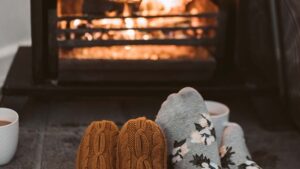With temperatures in Alabama falling below freezing this week, a poison control expert at Children’s of Alabama wants to remind people about the dangers of carbon monoxide poisoning. She says it can happen during the winter when people heat their homes in unsafe ways.
According to Ann Slattery, director of the Alabama Poison Information Center (APIC) at Children’s, the APIC received 144 calls about carbon monoxide exposures and poisonings in 2021, including 36 in the final three months of the year. Slattery said the APIC saw a spike in calls during a cold stretch in November, and with temperatures falling again, she knows some people may use risky heating methods.
“If there’s a power outage, they’re going to look for alternative ways to keep warm,” she says. “They may build fires, they may bring in their grills into their homes to try to help get some heat, that type of thing.”
[arve url=”https://youtu.be/pMoSvY-0CUk” title=”Cold weather and the risk for carbon monoxide poisoning” align=”center” loop=”no” muted=”no” /]
Heating your car also can be risky if not done safely. Slattery says carbon monoxide from the exhaust can enter your home even if you leave your garage door open while the car is warming. She recommends taking the car out of the garage or out from underneath the carport before heating it.
Gas stoves, pilot lights and kerosene heaters are other sources of carbon monoxide that can lead to poisoning if not used properly.
“Carbon monoxide can come into your home without there being smoke or a fire, so you would want to be able to catch it, be able to detect it,” she says.
That’s why Slattery recommends installing carbon monoxide detectors in your home.
“We recommend that you have one on every floor of your home,” she says. “We recommend that you have one in the hallway or outside of bedrooms so they will awaken you.”
Placement of the detector is important. Carbon monoxide doesn’t rise the way smoke does, so you can put it at any height. But Slattery recommends placing it 15 feet from a garage door, gas stove, fireplace or kerosene heater. Anything closer, and the detector could go off regularly.
Even if you have a carbon monoxide detector, you can take other measures to keep your family safe. With pilot lights, for example, you can check the color. If it’s blue, you’re safe. If more than the tip of the flame is yellow, then it could be a carbon monoxide risk.
If you have questions about carbon monoxide exposure, you can call the APIC at 1-800-222-1222. If you believe you or a family member are suffering from carbon monoxide poisoning (symptoms can include headache, dizziness and nausea), you should go to the nearest emergency department.





